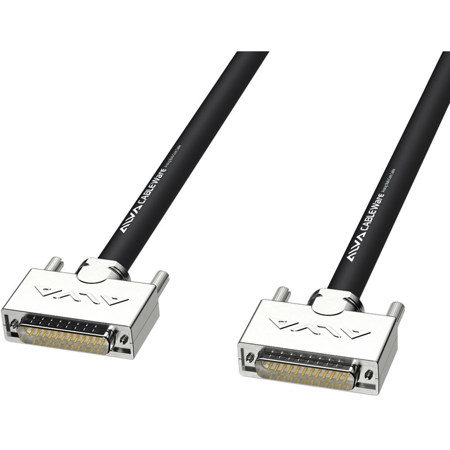
Alva 9.8' Analog Multi-Core Cable, D-Sub25 Male to D-Sub25 Male
Key Features
- Get pristine audio with this 9.8' analog multi-core cable, ensuring top sound quality.
- Durable D-Sub25 male connectors provide reliable connectivity for professional audio setups.
- Perfect for RME devices, this cable guarantees seamless audio signal transmission; buy now!
- Enjoy a clean studio setup; this compact cable reduces clutter and improves portability.
- Experience easy integration with your existing equipment using this user-friendly audio snake.
- Invest in quality; this Alva cable offers exceptional performance at an affordable price point.
See Options
Add Adorama Protect:
Need help? Ask our experts.
Reviews about this item
Review Summary
Select a plan in the Add Protection section above and purchase with this product by clicking “Add to Cart”.
TRUSTED PROTECTION PLANS, EXCEPTIONAL SERVICE.
Invest In Your Gear and Peace Of Mind!
Accidents happen where life happens. Protect your favorite Adorama products and purchase a protection plan to stay covered from accidental damage, mechanical or electrical failure, and more.
Repair or Replacement
If we can’t fix it, we’ll replace it at no additional cost.
Accidental Damage
Protect your product from drops, spills, and more.
Peace of Mind
Enjoy your gear without fear. We have you covered!
Malfunction Protection
When regular use of your product over time results in mechanical or electrical failure.
Zero Deductible
We will never charge you a deductible after the purchase of a plan.
Customer-Focused Support
Our claims process is simple & easy and our customer service team is happy to help.
Adorama Protect powered by Extend is available for purchase to customers in the United States. Not available for purchase Internationally or in U.S. Territories.
Browse our FAQ
Alva Audio 9.8' Analog Multi-Core Cable, D-Sub25 Male to D-Sub25 Male Specifications
Color
Cable: Black
D-Sub
25-pin male
UNC 4/40 threadRME Compatibility
ADI-8 QS, ADI-8 DS, ADI-8 DS Mk III <> DTOX-16 I/O
M-32 Pro AD, M-32 AD, M16 AD <> DTOX-16 I
M-32 Pro DA, M-32 DA, M16 DA <> DTOX-16 O
One cable is required for 8 channels.Dimensions
Length: 9.8' (3m)
Diameter: 0.55" (14mm)UPC Code
4260123364656
About Alva Audio 9.8' Analog Multi-Core Cable, D-Sub25 Male to D-Sub25 Male
Analog Multicore Cables
An audio multicore cable (often colloquially referred to in the US and Canada as a snake cable or just a snake) is a thick cable which contains from four to 64 individual audio cables inside a common, sturdy outer jacket. Audio multicore cables are widely used whenever multiple audio signals, for example from a number of microphones, need to be conveyed between common locations. Typical professional audio applications include audio recording, sound reinforcement, PA systems and broadcasting. The "snake" is typically used to make it easier to route many signals from the microphones or other input transducers, to the audio console or sound equipment.
Without a snake, a rock band performing onstage, for example, would have to have 20 or more individual mic cables running from the stage to the mixing console, which is typically located at the rear of a venue. It would be easy for the cables to become tangled, and it would be very hard for the audio engineers connecting the mic cables to the mixing board to determine which cable is for which mic (or other input).
Key Features
- Get pristine audio with this 9.8' analog multi-core cable, ensuring top sound quality.
- Durable D-Sub25 male connectors provide reliable connectivity for professional audio setups.
- Perfect for RME devices, this cable guarantees seamless audio signal transmission; buy now!
- Enjoy a clean studio setup; this compact cable reduces clutter and improves portability.
- Experience easy integration with your existing equipment using this user-friendly audio snake.
- Invest in quality; this Alva cable offers exceptional performance at an affordable price point.
What's in the box:
- 9.8' Analog Multi-Core Cable
- Alva 2 Year Warranty
